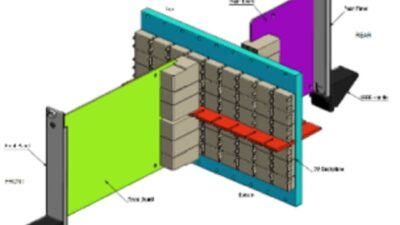Designing and implementing traditional hardwired safety solutions is complex, time consuming, and allows many errors. Once a system has been wired up, limited diagnostics add significant burden as well. Today, users have several choices of products and safety networks for industrial communications to address different needs.
Designing and implementing traditional hardwired safety solutions is complex, time consuming, and allows many errors. Once a system has been wired up, limited diagnostics add significant burden as well. Today, users have several choices of products and safety networks for industrial communications to address different needs.
AS-Interface was the first fully approved dual-use network. AS-Interface Safety at Work, developed in 1997, is approved for applications up to safety category 4 and allows interfacing with any dry contact or electronic output safety device.
Safety without redundant wires?
Engineers who are used to running redundant wires often ask how it is possible to build safe machines without them. The answer is relatively simple: while safety networks do not use redundant wires, they accomplish redundancy by different means that are typically smarter and arguably, even safer.
Even though the details of how this is done vary from network to network, they usually employ procedures like message duplication, extended checksums, and pre-negotiated message contents.
Whatever method has been used, before these systems are approved by the regulatory agencies, they undergo detailed evaluation.
An approved safety network has many advantages, leading more engineers to prefer networked safety over traditional hardwired implementations:
Much less wire — Most machine hardwired safety systems are wired according to safety category 3. The main reason is reduced cost and complexity compared to attempting a full category 4 installation. However, running multiple sets of cables from safe inputs to safety relays, between several safety relays, and from auxiliary contacts to PLC input cards can still be nightmarish. Safety networks have the potential to be much simpler.
Add devices easily — Safety I/O nodes can be added to the network at arbitrary locations, and, in most cases, no additional wiring is needed. Because networked safety solutions are data driven, it makes no difference where a safety device is located. This fact enables users to add devices anywhere. Once physically connected to the network, the new device is added to the configuration and then can be incorporated into the safety logic.
Application simplicity —Complex safety configurations are no problem for safety networks. What used to be accomplished by means of wire connections between traditional safety devices is now configured in software. Muting operations are just as simple as zone-dependent operations on a multi-zone conveyor line.
True diagnostics — Diagnostics for hardwired systems are based on auxiliary contacts. The problem is that information derived from auxiliary contacts does not always coincide with that state of the safety contact in the same device. The only troubleshooting tool available is the ohm-meter. Safety networks do not rely on auxiliary contacts, so diagnostics are definitive and accomplished through the network.
Dual use — While safety networks have significant advantages, some implementations go even further. Dual use systems make it possible to connect safety and standard (non-safe) devices to the same network, offering the fastest return on investment and unparalleled flexibility in the field.
Author Information
Helge Hornis is manager of intelligent systems at Pepperl+Fuchs. Reach her at [email protected] .



